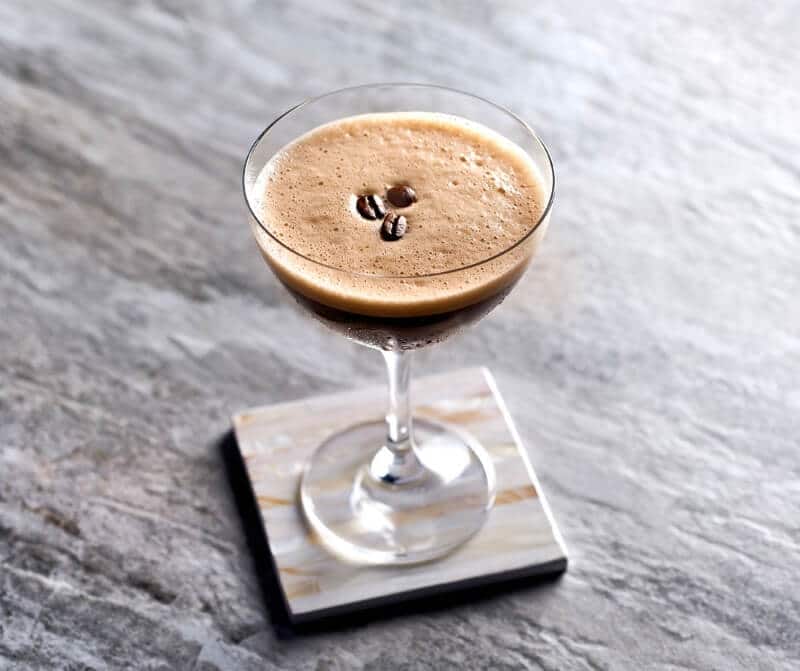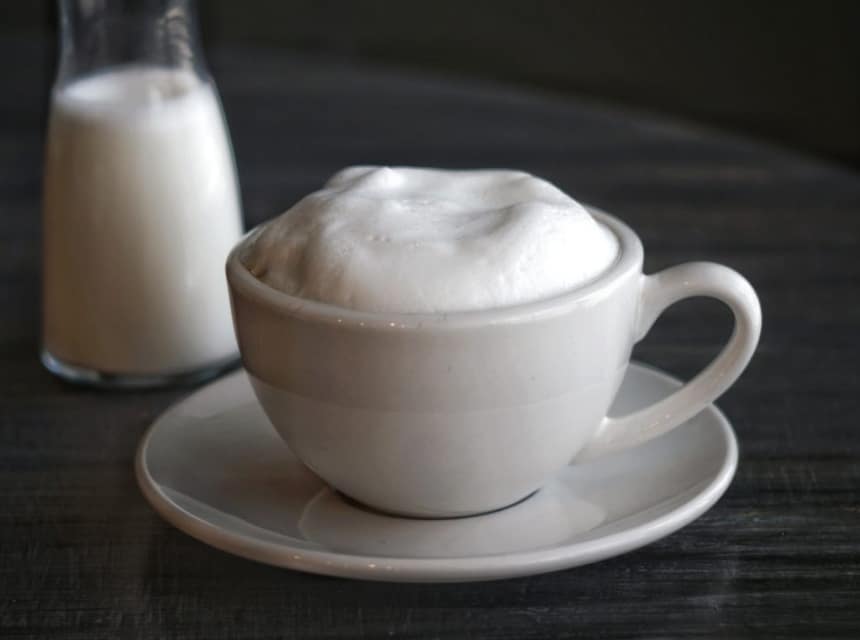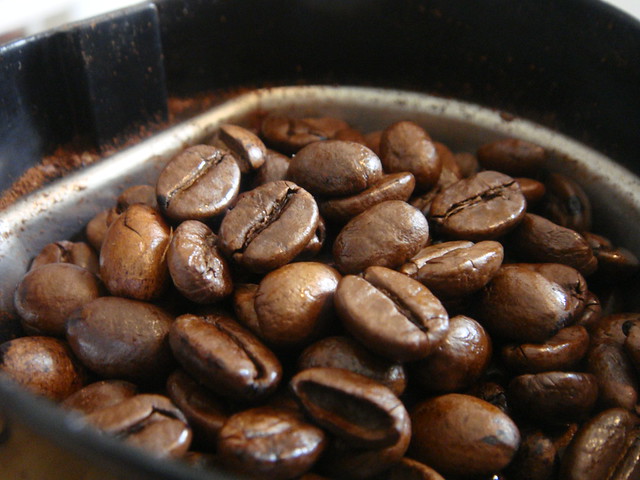

According to statistics by the National Coffee Association Trusted Source The National Coffee Association (NCA) today (Thursday) unveiled the most comprehensive survey ever of American coffee drinking habits, showing American coffee drinking has reached new highs and is essential to daily lives coast-to-coast. www.ncausa.org USA, 62% of the population consumes at least one cup of coffee every day. That said, coffee comes in different variants, with macchiato and cortado being among the options. While the average Italian or Spaniard may know the difference between the two beverages, some Americans don’t have the slightest clue.
So, macchiato vs cortado: what’s the difference? That’s the question of the day. If you’ve struggled with telling these two apart in the past, below is some information that might help you figure out the differences.
Cortado is a product of Spain, which is why we said a Spaniard could probably tell the difference between the cortado’s taste and a macchiato. Notably, the beverage is a variation of an espresso that is mixed with milk.
There’s also a clue for Spanish speakers in the name since the term “cortar” is a verb that refers to cutting something. In this case, the texture and taste of the espresso are cut or diluted using warm milk. Additionally, the mixing ratio for a cortado is often equal parts espresso and milk.
As a result, most of the coffee’s flavors won’t be as pronounced as in black coffee. This can make it inherently easier to consume, especially for those who dislike coffee’s acidity and bitter taste. That said, the milk used has to be steamed.
Since a cortado is mostly a modified espresso, the coffee used is likely a dark roast ground to fine particles.
As for the macchiato, its roots and history are in Italy. That said, it’s without question one of the most popular caffeinated beverages sold in American coffee shops today.
Like the cortado, the macchiato’s name is very indicative of the nature of the beverage since the word can be translated to “marked” in English. This means that not much milk is added to the espresso. The terms “a dash of milk” seem more appropriate.
While it does tweak the flavor profile of espresso, the change is quite small. Nevertheless, it is enough to add a bit of texture and, in most cases, make the beverage easier to drink.
Also notable is that Italian culture doesn’t take too kindly to milk-based drinks in the afternoon. However, since the milk content in a macchiato is minimal, nobody will come at you with pitchforks if you order one in the afternoon while on holiday in Italy.
Like the cortado, the base for a macchiato is a well-brewed cup of espresso. As such, a finely ground dark roast blend of coffee will work just fine while making the beverage.
For clarity purposes, we delve deeper into the espresso macchiato vs cortado debate in the sections below. This includes looking at the brewing processes, coffee grind and strength, brewing time, taste, milk, and serving options.
The brewing process is not all that different for the cortado and macchiato. Both will require the use of an espresso machine, of which most Jura machines seem adept at the job. If finding the most outstanding Jura machines has proved a tall order, you can find more information on how to go about it on the link provided.
As stated above, a dark roast of coffee, finely ground will work for both the macchiato and the cortado. Also, while most baristas pull a single shot of espresso for the macchiato, the cortado is usually served with a double shot espresso. This is not to say the strength of the coffee is different.
A traditional single shot of espresso typically uses about 7g of finely ground coffee, and the resulting beverage is about 30mls of espresso. As for the double shot, you double the amount of coffee used, but the yield is also doubled to 60 ml, so the ratios are similar.
As for the brewing time, espresso machines take the same amount of time to pull a single and a double shot. Provided you allow the machine to heat up beforehand, both a double shot and a single shot espresso should take between 20 and 30 seconds to make. The heat-up time can vary depending on the make and model of your coffee maker.
The cortado vs macchiato debate takes on a new twist once you get to the milk component, as this is where differences start to come up. First, the type of milk you use for a macchiato and a cortado will be different. While the dash of milk used in a macchiato is frothy or foamy, a cortado simply uses steamed milk.
Additionally, both options can work with various milk alternatives, including almond, coconut, and oat milk. However, it’s important to experiment with these alternatives before you can add them to your coffee as some curdle when you turn the heat up too high.
Lastly, the Spanish beverage uses milk and espresso coffee in the ratio of 1:1, while the alternative just needs a dash of milk.
The serving options mirror the portioning differences between the two beverages. This means that a macchiato will be presented to you in a demitasse cup. These cups are small and appropriate for the size of the beverage. As for the cortado, a cortado glass is used. This piece of crockery resembles the tall glasses you find in a cocktail bar with gin and tonic beverages.
In terms of taste, you have to remember that the Italian beverage isn’t as diluted as the cortado. As such, while milder than a plain espresso, the coffee flavors and acidity will still feature in your taste buds quite strongly.
In contrast, a cortado will be creamier, smoother, less intense, and may even require less sugar for those who like their coffee sweet.
Here’s how to make your very own cortado at home.
First, you’ll have to brew a double shot of espresso. While you can do this with other home tools and recipes, an espresso machine makes your work so much easier. According to coffee enthusiast’s reviews, the Gaggia Anima Prestige is quite a reliable espresso machine. It even offers programmable control that will likely make your morning brewing routine a cakewalk.
Besides the machine, you’ll need dark roast coffee. Ensure you grind it to fine particles. After that, it’s a matter of pressing a button and waiting for your double shot to be pulled.
These espresso makers also tend to contain steam wands which will be handy to steam your milk. You can use almond, coconut, and other milk alternatives. Notably, you only need about 2 ounces of milk for your beverage. However, you’ll need to steam more than that to prevent burning.
Presumably, the double shot will be pulled into a small cup. You can transfer it into a cortado glass as it has the capacity for both the espresso and the milk you’re about to add.
After that, pour in the milk so that both the milk and the espresso are equal. You can even use the small cup to measure. Unless you use a measuring cup, you’ll have to estimate how much milk to pour in.
Once the ratio of milk to espresso is 1:1, your cortado is ready, and you can serve and enjoy the beverage.
Here’s a recipe for a macchiato as well.
Brew a single shot of espresso using an espresso machine. Reviewers and coffee experts agree that the Breville Maker Barista machine works well to make barista-style espressos. It even has digital temperature control, which can be essential in ensuring the espresso is just right.
If you already have such a machine, load the grinds, fill the water reservoir and press the right buttons.
Next, you’ll heat the milk. This time ensure the tip of the steam wand is positioned under the surface of the milk. Consequently, you’ll get frothy/foamy/texturized milk, although the wand will also be heating your milk.
Most people pull the coffee directly onto an espresso glass, so this step is often unnecessary.
Before adding the milk, swirl it gently to eliminate any large air bubbles. You can also tap the milk jug gently onto a hard surface if there are some stubborn bubbles. Finally, you pour just a bit of the milk onto the coffee, and it’s ready.
Serve and drink your macchiato without much ado.
According to Havard Health Publishing Trusted Source The latest scoop on the health benefits of coffee - Harvard Health Coffee used to be criticized for contributing to a number of health problems, but time and research have disproved most of those beliefs. Now coffee is considered healthy, but as with so many things, moderation is important. www.health.harvard.edu , coffee has more benefits than downsides, so there’s no reason to stop if you have been partaking. In terms of the macchiato vs cortado debate, the macchiato is more prevalent in the US, but that does not make it better than the cortado. It comes down to the coffee drinker’s tastes. That said, you can’t decide on which option you like best without trying both.
The recipes above should be handy if you intend on comparing the two. Once you find out which option you like, don’t hesitate to tell us in the comments box below. A few details on the why will also be quite welcome.





